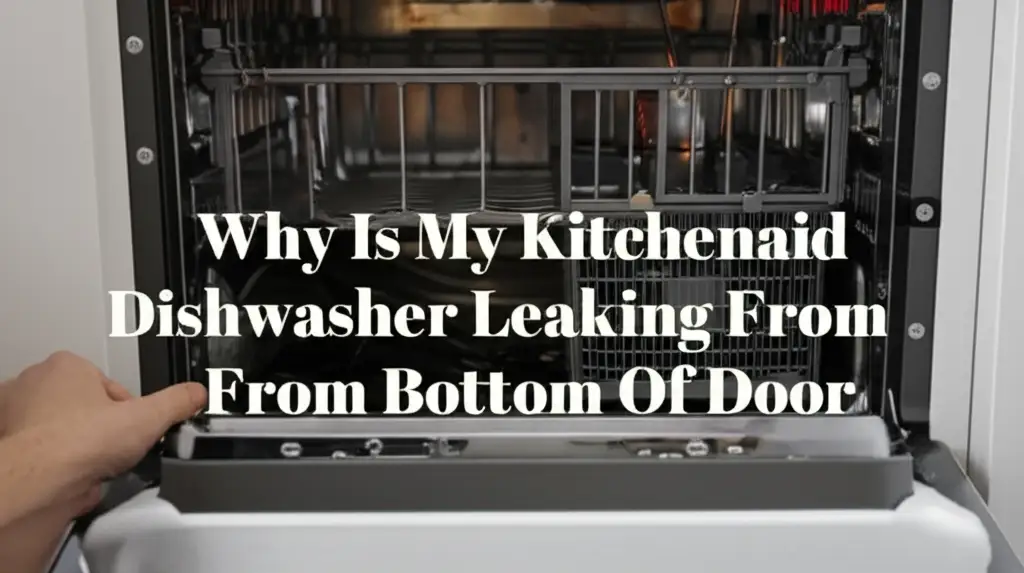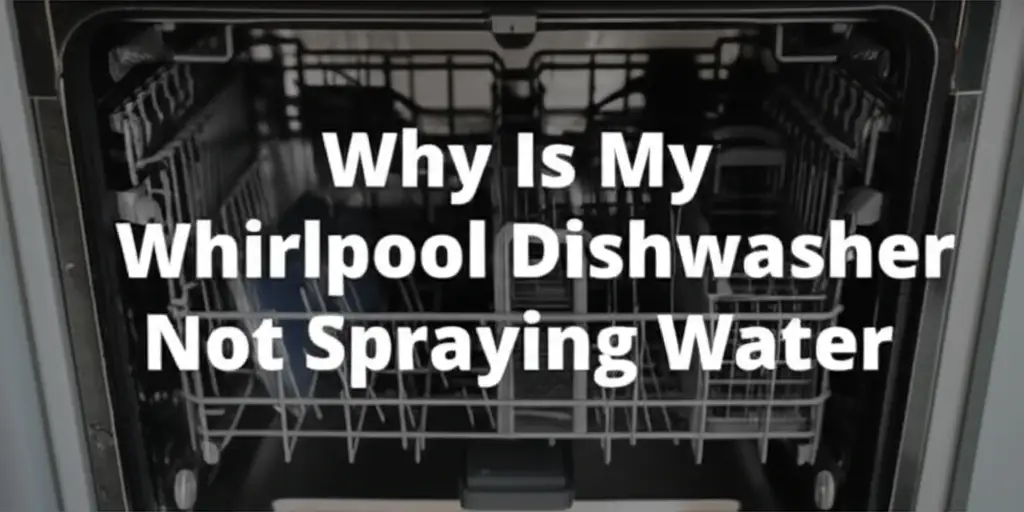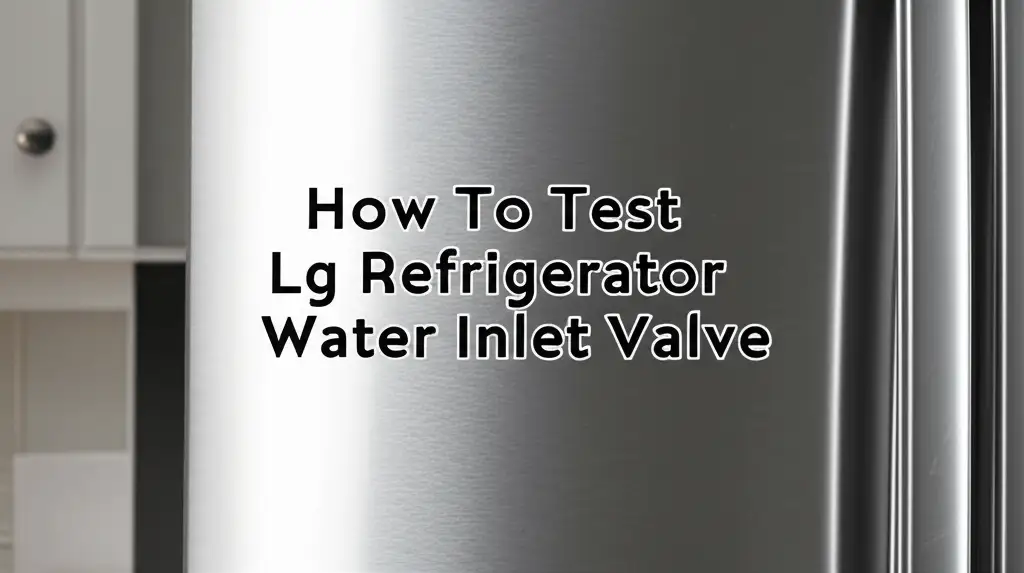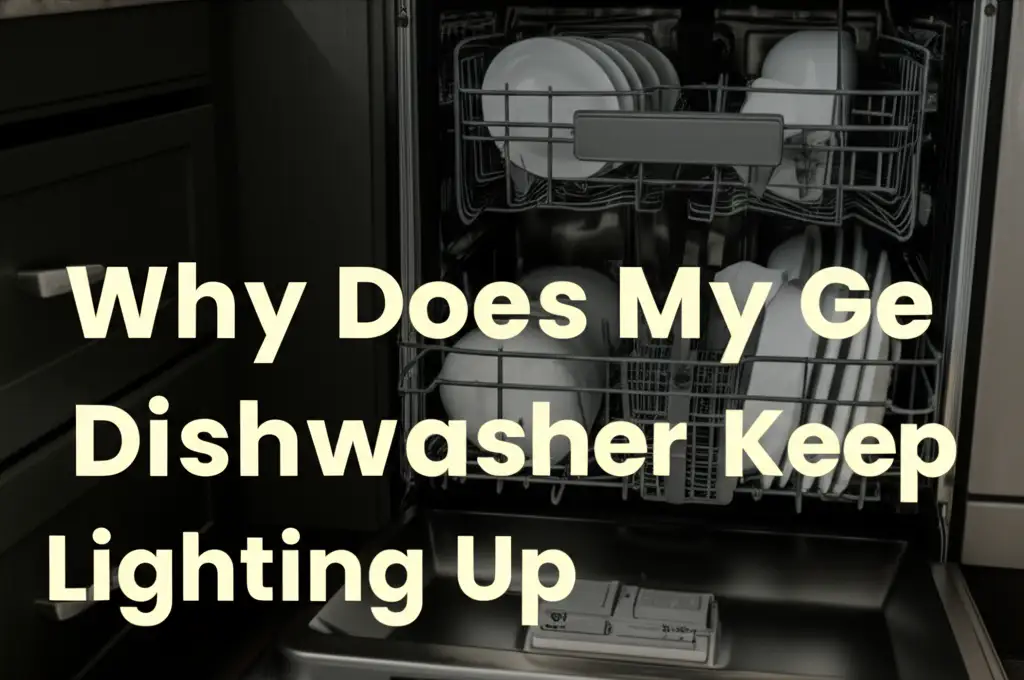· Todd Martin · Appliance Repair · 14 min read
Why Does My Whirlpool Dishwasher Stop Mid Cycle
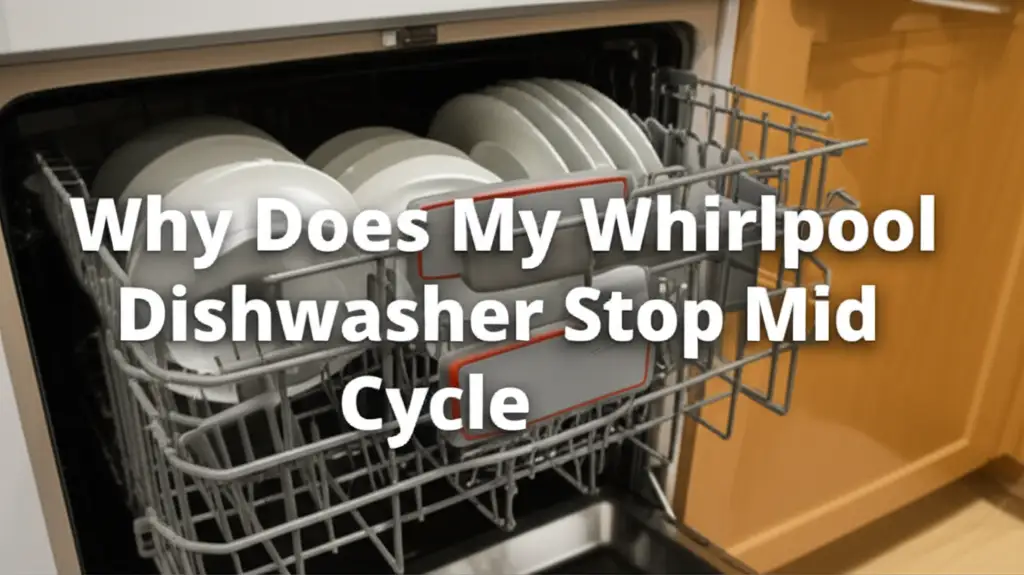
Troubleshooting Your Whirlpool Dishwasher: Why It Stops Mid-Cycle
There is nothing quite as frustrating as a half-finished chore, especially when it involves dirty dishes. You load your Whirlpool dishwasher, press start, and expect sparkling clean results. But then, it just stops. Perhaps it halts silently in the middle of a wash, or maybe it flashes an error code before going quiet. When your Whirlpool dishwasher stops mid cycle, it throws a wrench into your kitchen routine. I know how inconvenient this can be, and it leaves you wondering what went wrong.
This comprehensive guide will help you understand the most common reasons behind this frustrating issue. We will explore everything from simple fixes you can perform yourself to identifying more complex problems that might require professional help. My goal is to empower you with the knowledge to diagnose and fix your appliance, getting your dishes clean and your kitchen back in order. Let’s get to the bottom of why your dishwasher is acting up and bring back its reliable performance.
Takeaway
When your Whirlpool dishwasher stops mid cycle, it usually points to a common issue you can often fix.
- Check your home’s water supply and the dishwasher’s inlet valve.
- Clear any clogs in the filter, drain hose, or air gap.
- Ensure the door latch engages fully and the switch works.
- Look for signs of overheating or a blown thermal fuse.
- Consider issues with the control board or sensor malfunctions.
Why Does My Whirlpool Dishwasher Stop Mid Cycle?
Your Whirlpool dishwasher stops mid cycle for several reasons. The most common causes include issues with water supply, drainage blockages, a faulty door latch, overheating, or problems with the electronic control board. Addressing these common areas often resolves the interruption.
Understanding Water Supply Issues
A Whirlpool dishwasher needs a consistent water supply to complete its cycles. If the water flow is interrupted or insufficient, your dishwasher will stop mid-cycle. It does this to prevent damage and ensure proper cleaning. Checking the water supply is one of the first steps in troubleshooting.
Checking the Water Inlet Valve
The water inlet valve is crucial. It controls the flow of water into the dishwasher. If this valve is faulty, it may not open properly, or it might get stuck. This prevents enough water from entering the tub. You should inspect the valve for any visible damage or signs of mineral buildup. A clogged screen on the inlet valve can also restrict water flow.
First, turn off the water supply to the dishwasher. Then, disconnect the water line from the valve. Check the small screen inside the valve for debris. Clean it if you see any particles. If the valve itself does not operate correctly, it might need replacement. This part uses an electromagnet to open and close, and sometimes the coil fails.
Water Pressure and Supply Line Problems
Low water pressure can also cause your Whirlpool dishwasher to stop mid cycle. The dishwasher needs a specific amount of pressure to fill correctly. If your home’s water pressure is generally low, other appliances might also struggle. You can test your home’s water pressure using a simple gauge.
Also, check the supply line connected to your dishwasher. Kinks or blockages in the hose can restrict water flow. Make sure the shut-off valve for the dishwasher is fully open. Sometimes, calcium or mineral deposits can build up inside the supply line, narrowing the path for water. If the dishwasher fills with water but does not wash, it could be a related water supply or pressure issue. Learn more about why your Whirlpool dishwasher fills with water but not wash.
Addressing Drainage System Obstructions
Proper drainage is essential for a dishwasher to complete its cycle. If water cannot drain out, the dishwasher will likely stop. This is a safety mechanism to prevent overflowing and potential water damage. Clogs in the drainage system are very common culprits.
Cleaning the Dishwasher Filter
Your Whirlpool dishwasher has a filter at the bottom of the tub. This filter catches food particles and debris, preventing them from recirculating or clogging the drain pump. Over time, this filter can become heavily soiled and restrict water flow during the drain cycle. A clogged filter will cause water to pool, and the dishwasher might pause or stop completely.
I make it a habit to check my dishwasher filter regularly. To clean it, simply remove the lower rack. Then, twist and lift the filter assembly. Rinse it under running water, scrubbing gently with a brush if needed. Make sure to remove all food scraps and grease. Reinstall the clean filter firmly back into place. This simple step often solves many drainage issues.
Inspecting the Drain Hose and Air Gap
Beyond the filter, the drain hose is another critical component. This hose carries the dirty water from the dishwasher to your sink drain or garbage disposal. Kinks, twists, or internal blockages in the drain hose can prevent water from exiting. Physically inspect the hose behind the dishwasher and under the sink for any obvious bends.
If your dishwasher connects to a garbage disposal, ensure the knock-out plug inside the disposal inlet has been removed. If it hasn’t, water cannot drain properly. Additionally, some installations include an air gap on the sink. This small cylindrical device prevents dirty sink water from flowing back into the dishwasher. The air gap itself can become clogged with food debris, causing drainage issues. Remove the air gap cover and clean out any blockages you find. A clogged drain system can also cause standing water in the bottom of your dishwasher. Find out more about why your Whirlpool dishwasher has water in the bottom.
Faulty Door Latch or Switch
The dishwasher door latch and its associated switch are vital safety features. Your Whirlpool dishwasher will not run if it detects that the door is not securely closed. If the door latch is not fully engaged, or if the switch inside it is faulty, the dishwasher will stop mid-cycle. It might even refuse to start at all.
When the dishwasher door closes, the latch mechanism connects securely. This action presses a small switch, signaling to the control board that the door is shut. If this signal is not received, the dishwasher pauses. I always make sure the door clicks firmly into place before starting a cycle. Sometimes, the latch can become worn or misaligned.
Inspect the door latch for any visible damage or bending. Make sure it aligns correctly with the strike plate on the dishwasher’s tub. You can try gently wiggling the door while the dishwasher is running (if it starts) to see if it causes a stop. If it does, the latch or switch is likely the problem. A faulty door switch needs replacement to allow the dishwasher to operate safely and completely. Other dishwasher brands like KitchenAid can also exhibit similar start-and-stop behavior due to latch issues. Discover more about why a KitchenAid dishwasher starts and stops.
Overheating and Thermal Fuse Issues
Dishwashers can generate a lot of heat, especially during the drying cycle. To prevent damage from excessive temperatures, Whirlpool dishwashers have safety mechanisms. If the internal temperature rises too high, the dishwasher will automatically shut down. This is usually due to a failing component or a clogged system causing the motor to work harder.
The primary safety device is the thermal fuse. This small, heat-sensitive component is designed to blow (break the circuit) if the temperature inside the dishwasher exceeds a safe limit. Once the thermal fuse blows, it permanently cuts power to the control board or the heating element. This immediately stops the dishwasher.
A blown thermal fuse means there was an underlying issue causing the overheating. Common causes include a malfunctioning heating element, a failing wash motor that draws too much current, or severe blockages in the circulation system that force the motor to overwork. While replacing the fuse is straightforward, it is crucial to identify and fix the root cause of the overheating. Otherwise, the new fuse will likely blow again. If your Whirlpool dryer also stops mid-cycle, it might be due to similar overheating issues and thermal fuses. Explore reasons why your Whirlpool dryer stops mid-cycle.
Malfunctioning Control Board or Sensors
The control board is the brain of your Whirlpool dishwasher. It sends commands to all components, managing the wash, rinse, and dry cycles. If the control board malfunctions, it can send incorrect signals or stop sending them altogether. This results in the dishwasher stopping mid-cycle without warning or displaying odd behavior.
Modern dishwashers also rely on a variety of sensors to monitor conditions. These include temperature sensors, turbidity sensors (for water cleanliness), and float switches (to detect water levels). If any of these sensors fail, they can send incorrect data to the control board. For example, a faulty water level sensor might tell the board the dishwasher is full when it is not, causing it to stop filling.
Diagnosing a control board or sensor issue can be challenging without specific tools. You might notice unusual error codes appearing, or the dishwasher’s buttons may not respond. Sometimes, a power reset (unplugging the dishwasher for a few minutes) can resolve minor glitches in the control board’s software. If the problem persists, a professional technician often needs to diagnose and replace these electronic components. A similar issue can affect other brands, such as a Frigidaire dishwasher starting and then stopping. Find out why your Frigidaire dishwasher starts and then stops.
Common Error Codes and What They Mean
When your Whirlpool dishwasher stops mid-cycle, it often displays an error code on its control panel. These codes are like clues; they tell you what the dishwasher thinks is wrong. Understanding these codes is key to troubleshooting. Different models might use slightly different codes, so always refer to your owner’s manual for the exact interpretation for your specific Whirlpool dishwasher.
Common Whirlpool error codes relate to water issues. For instance, an “F1” or “F2” code often points to a problem with water supply or drainage. This could mean the dishwasher is not getting enough water, or it cannot drain the water it has. Checking your water inlet valve and drain pump becomes the next step. If you see a code related to the door, like “Fd” or similar, it confirms a problem with the door latch or switch.
Sometimes, codes indicate overheating or a sensor issue. For example, a “F3” or “F4” might suggest a heating element or temperature sensor problem. If the control board itself is malfunctioning, you might see a “F7” or “F8” code, indicating an electronic failure. Always try a power cycle (unplug for 5 minutes) first to reset the control board. If the code reappears, it confirms a persistent issue. Knowing these codes helps you narrow down the problem quickly.
Preventative Maintenance for Seamless Cycles
Regular maintenance helps prevent your Whirlpool dishwasher from stopping mid-cycle. Simple habits can extend your appliance’s life and ensure consistent performance. By taking a few proactive steps, you can avoid frustrating interruptions and expensive repairs. This keeps your dishwasher running smoothly.
Keeping Your Dishwasher Clean
A clean dishwasher works better. Food debris, grease, and hard water deposits can build up inside the tub, spray arms, and filters. This buildup restricts water flow and drainage. I recommend cleaning your dishwasher’s filter every few weeks, especially if you wash many heavily soiled dishes. It is a quick and easy task that makes a big difference.
Beyond the filter, periodically run a cleaning cycle. You can use a dishwasher cleaner or a cup of white vinegar placed on the bottom rack. The vinegar helps break down mineral deposits and eliminate odors. Wipe down the door gasket regularly to prevent mold and grime buildup. A clean gasket ensures a good seal, which is important for cycle completion.
Proper Loading and Detergent Use
How you load your dishwasher affects its performance. Overloading can block spray arms, preventing water from reaching all dishes. This leads to poor cleaning and can stress the pump, potentially causing the dishwasher to stop. Ensure spray arms can rotate freely before starting a cycle.
Using the right amount and type of detergent is also important. Too much detergent can create excessive suds, which can overflow or cause the dishwasher to stop. Too little might not clean effectively. Always use fresh detergent and store it in a cool, dry place. Using rinse aid helps dishes dry better and reduces water spots. Proper loading and detergent use help the dishwasher operate efficiently, reducing strain on its components. This reduces the chances of your dishwasher stopping unexpectedly.
Checking for Regular Wear and Tear
Components in your dishwasher wear out over time. Periodically check the spray arms for clogged holes. Hard water can cause mineral buildup in these small openings, reducing water pressure and cleaning efficiency. You can use a toothpick or small wire to clear them.
Inspect the drain hose for cracks or signs of kinking. Over time, rubber hoses can degrade. Listen for unusual noises during the wash or drain cycles; these can indicate a failing motor or pump. If you notice persistent issues or hear strange sounds, it is often a sign that a component is nearing the end of its life. Addressing these small issues early can prevent a complete shutdown of your Whirlpool dishwasher.
FAQ Section
Q1: Why does my Whirlpool dishwasher stop mid cycle and beep?
A: When your Whirlpool dishwasher stops mid cycle and beeps, it often indicates an error or a detected problem. The beeping usually accompanies an error code on the display. Common reasons include issues with water supply, drainage, or a faulty door latch. Check your owner’s manual for the specific error code displayed to diagnose the exact issue.
Q2: What does it mean when my Whirlpool dishwasher just pauses?
A: A pause can be a normal part of the cycle, especially if it is a Smart or Energy Star model that adjusts wash times. However, if the pause is prolonged and doesn’t resume, it could indicate low water pressure, a temporary power glitch, or a sensor detecting an issue. Try opening and closing the door firmly, or perform a power cycle by unplugging it.
Q3: How do I reset my Whirlpool dishwasher when it stops mid cycle?
A: To reset your Whirlpool dishwasher, first try opening and firmly closing the door. If that does not work, turn off the circuit breaker that powers the dishwasher for 5-10 minutes, then turn it back on. This hard reset can clear temporary errors. Some models also have a “Cancel” or “Drain” button that can be held down for a few seconds to reset the cycle.
Q4: Can a power surge cause my Whirlpool dishwasher to stop mid cycle?
A: Yes, a power surge or a sudden power interruption can cause your Whirlpool dishwasher to stop mid cycle. A surge can temporarily disrupt the control board’s operation, or in some cases, damage it. If this happens, a power reset often resolves the issue. For recurring problems after surges, consider using a surge protector.
Q5: Should I call a technician if my Whirlpool dishwasher keeps stopping?
A: You should call a technician if you have tried basic troubleshooting steps and your Whirlpool dishwasher still keeps stopping. If you cannot identify the error code, suspect a control board malfunction, or feel uncomfortable replacing parts like the water inlet valve or drain pump, a professional can diagnose and fix the problem safely and efficiently.
Q6: Why does my dishwasher sometimes stop with water left inside?
A: If your dishwasher stops mid-cycle and leaves water inside, it strongly suggests a drainage problem. This could be due to a clogged filter, a kinked or blocked drain hose, a malfunctioning drain pump, or issues with your sink’s air gap or garbage disposal connection. The dishwasher stops to prevent overflowing when it cannot drain correctly.
Conclusion
It can be incredibly annoying when your Whirlpool dishwasher stops mid cycle, leaving you with dirty dishes and a sense of frustration. However, as we have explored, many of these issues have straightforward solutions. I encourage you to start by checking the simplest things: your water supply, the cleanliness of your filters, and the door latch. These common culprits are often the easiest to fix, and you can tackle them yourself.
Understanding how your dishwasher works helps you pinpoint the problem quickly. Whether it’s a minor blockage or a component needing replacement, diagnosing the issue will save you time and money. If you have exhausted these troubleshooting steps and your Whirlpool dishwasher still refuses to complete a cycle, do not hesitate to reach out to a certified appliance technician. They possess the tools and expertise to handle more complex electrical or mechanical failures. Remember, regular maintenance can prevent many of these problems from occurring in the first place, ensuring your dishwasher continues to be a reliable workhorse in your kitchen.


